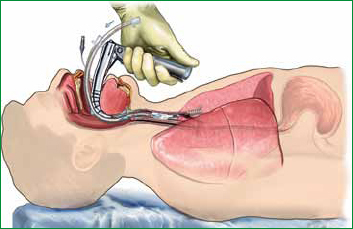Egly et al (2011) conducted a retrospective review of a cardiac arrest database maintained by a large suburban emergency department in Michigan to which paramedics, from a combination of municipal and private provider agencies, transport cardiac arrest patients according to standardized regional protocols.
The study examined all cases of out-of-hospital cardiac arrest (OHCA) in patients aged >18 years that occurred between January 1995 and December 2006, with investigators manually reviewing notes to exclude cases of traumatic cardiac arrest and patients with prompt return of spontaneous circulation (ROSC) where endotracheal intubation (ETI) would not be indicated.
During the study period, ETI was considered the preferred method of airway management in cardiac arrest, with the Combitube used as a rescue device in cases where ETI failed.
Retrospective database analysis by Egly et al identified a total of 1515 nontraumatic adult cardiac arrest cases, with 33 survivors with prompt ROSC excluded.
A total of 1220 (86.2%) patients were successfully intubated, with 270 (20.2°%) surviving to admission and 93 to discharge (7.0%). There was no significant difference in overall survival to discharge between the intubation and non-intubation groups (6.5% vs 10%, P=0.09).
In patients presenting in a shockable rhythm, the only significant predictor of survival to admission was witnessed cardiac arrest (OR=2.31, 95% CI 1.44-3.72), therefore no multivariate analysis was performed.
In this patient group, ETI was negatively associated with survival to discharge (0R=0.50, 95% CI 0.26-0.93), whereas patients with a witnessed arrest were more likely to survive to discharge (OR=2.89, 95% CI 1.43-5.83). After controlling for witnessed cardiac arrest, multivariate analysis demonstrated that ETI significantly decreased survival to discharge in patients presenting in a shockable rhythm (adjusted 0R=0.52, 95% CI 0.27-0.998).
Conversely, in patients presenting in non-shockable rhythms, ETI was a significant predictor of survival to admission (OR=2.94, 95% CI 1.16-7.44). In common with patients presenting in VF or VT, witnessed cardiac arrest remained a predictor of survival to admission (OR=2.68, 95% CI 1.46-4.91). In a multivariate model for patients presenting in a non-shockable rhythm, ETI increased survival to admission (adjusted OR=2.96, 95% CI 1.04-8.43) after controlling for witnessed cardiac arrest. There were no significant predictors of survival to discharge for non-VF/VT patients, therefore no further multivariate analysis was performed.
Although there are methodological limitations associated with retrospective database analysis including in this study, as the authors identify, factors such as inability to verify correct placement of ET tube, accuracy of documentation, etc. This research identifies interesting trends associated with the use of ETI by paramedics in out-of-hospital resuscitation.
It has been suggested that ETI by paramedics in patients presenting in VF, or pulseless VT, may detract from other interventions unequivocally found to increase survival, such as chest compression and defibrillation. This may provide an explanation for the lower survival rates associated with ETI identified in patients with shockable rhythms reported by Egly and colleagues.
This study also found that ETI was associated with increased survival to admission but not to discharge in cardiac arrest patients presenting with non-shockable rhythms, suggesting that ETI is not harmful in this circumstance, and may provide at least short term benefit.
The future of paramedic ETI in cardiac arrest may therefore lie in defining the sub-sets of patients in whom the procedure may be of benefit and refining guidelines to reflect this, rather than universal abandonment of the technique for all.

